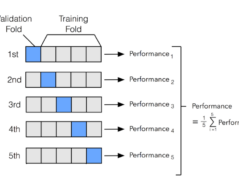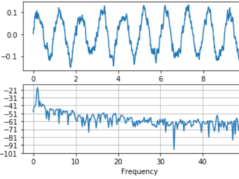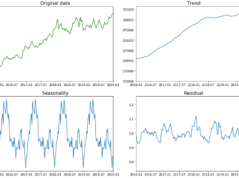
Deep Learning: A Revolution in Financial Markets
The financial markets realm has always been a hotbed for innovation and technological advancement. Artificial Intelligence is the recent wave hitting these markets globally, particularly Deep Learning. This blog post explores the world of Deep Learning, its differentiation from Neural Networks, its practical applications in financial markets, its limitations, and a real-life example to illustrate its potential.
Understanding Deep Learning and Neural Networks
Deep Learning, an integral part of Machine Learning, utilizes neural networks with multiple layers to learn from vast amounts of data. These networks imitate the human brain's workings, decoding information in a similar manner. A neural network can make approximate predictions with a single layer. Still, Deep Learning models go beyond this, using multiple layers to optimize results and detect intricate patterns for precise predictions.
Comparatively, Neural Networks provide the backbone on which Deep Learning rests. A neural network is an interconnected group of nodes, akin to the vast network of neurons in a human brain. They serve as the foundation for Deep Learning, helping it analyze complex data and extract valuable features for decision-making.
Practical Applications of Deep Learning in Financial Markets
Deep Learning holds immense promise for Indian Financial Equity Markets, with several potential applications:
- Risk Management: Financial institutions can leverage Deep Learning to identify potential risks by analyzing market conditions, consumer behaviors, and transaction data. This advanced capability can help avert significant losses and ensure sustainable growth.
- Portfolio Management: Deep Learning can recognize patterns in vast datasets and predict future trends, assisting investment managers in creating and managing efficient portfolios. This aspect makes it a powerful tool for enhancing portfolio performance and achieving financial goals.
- Algorithmic Trading: Deep Learning serves as the backbone for creating complex trading algorithms. These algorithms can process a plethora of historical data and use predictive analytics to make informed trading decisions. Thus, it optimizes trading strategies and maximizes returns.
Limitations of Deep Learning
While Deep Learning offers significant benefits, it comes with its set of challenges. The foremost being its need for vast amounts of data and significant computational resources. Ensuring the quality and relevance of data used for learning is another critical concern.
Additionally, overfitting poses a significant challenge. This occurs when the models perform exceedingly well on training data but underperform with new, unseen data. Overcoming this challenge requires sophisticated model design and proper validation techniques.
Deep Learning in Action: Real-life Example
To better understand Deep Learning's practical implications, consider an example from the Indian Financial Equity Markets. Let's say a mutual fund company aims to optimize its portfolio. The traditional approach would involve human analysts going through volumes of market data, leading to potential errors and inefficiencies.
On the contrary, with Deep Learning models, the company can analyze this data, detect patterns, forecast future trends, and optimize the portfolio with superior precision and efficiency. This change enhances portfolio performance and saves considerable time and resources, signifying a paradigm shift in how financial markets operate.
Deep Learning - Transforming Financial Markets
Deep Learning, despite its challenges, brings transformative potential to the financial markets, marking the dawn of a new era characterized by increased precision, enhanced efficiency, and superior decision-making capabilities. It is poised to redefine the financial sector's landscape, making it a topic worth exploring for anyone interested in finance, data science, or artificial intelligence.
Follow Quantace Research
-------------
Why Should I Do Alpha Investing with Quantace Tiny Titans?
1) Since Apr 2021, Our premier basket product has delivered +40% Absolute Returns vs the Smallcap Benchmark Index return of +7%. So, we added a 33% Alpha.
2) Our Sharpe Ratio is at 1.4.
3) Our Annualised Risk is 20.1% vs Benchmark's 20.4%. So, a Better ROI at less risk.
4) It has generated Alpha in the challenging market phase.
5) It has a good consistency and costs 6000 INR for 6 Months.
-------------
Disclaimer: Investments in securities market are subject to market risks. Read all the related documents carefully before investing. Registration granted by SEBI and certification from NISM in no way guarantee performance of the intermediary or provide any assurance of returns to investors.
-------------
#future #machinelearning #research #investments #markets #investing #like #investment #assurance #management #finance #trading #riskmanagement #success #development #strategy #illustration #assurance #strategy #mathematics #algorithms #machinelearning #ai #algotrading #data #financialmarkets #quantitativeanalysis #money






